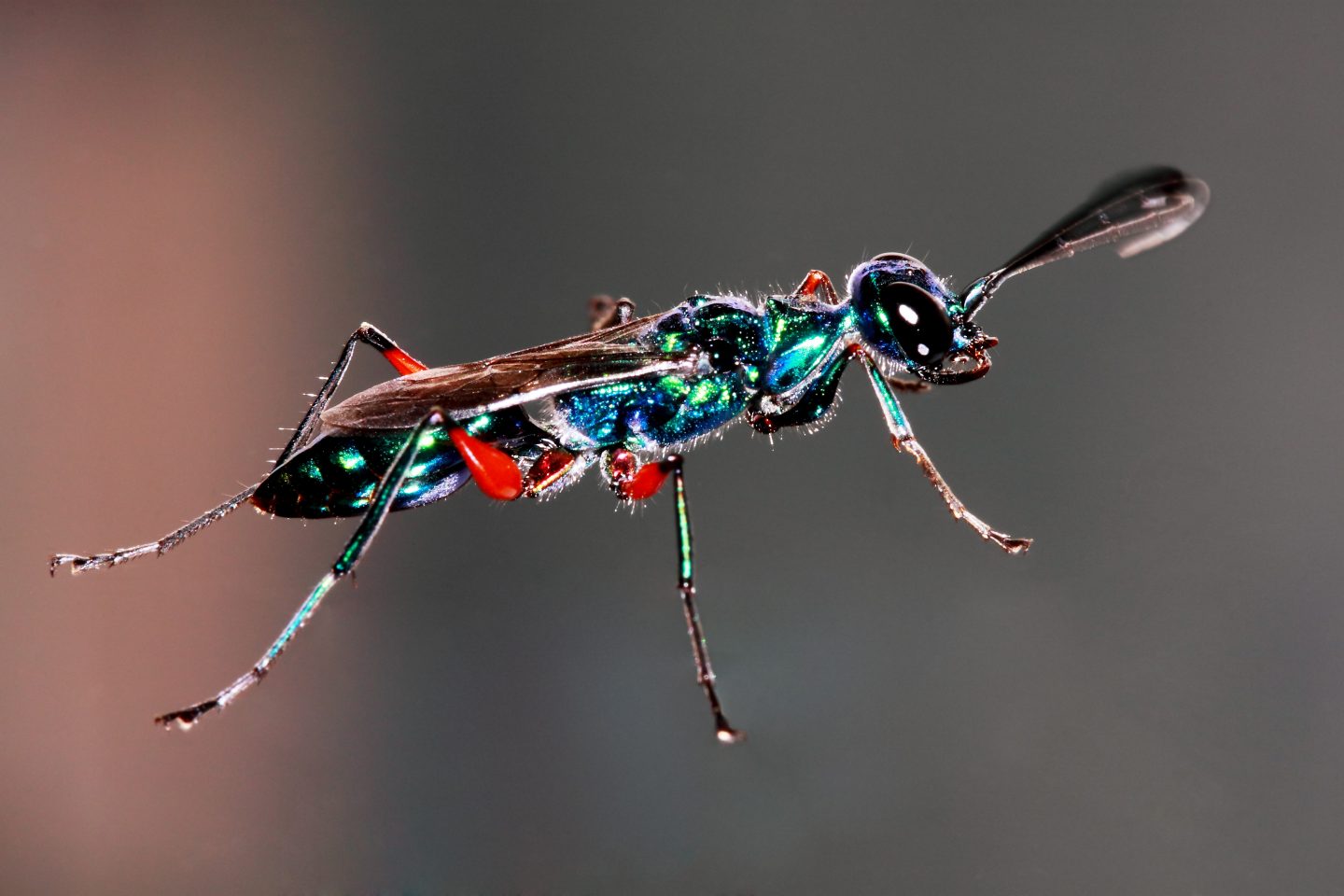(Content warning: this article contains bugs and nasty stuff they do)
Yesterday, I wrote about the concept of parasitic architecture and questioned how parasitic it was. After all, it didn’t really “feed” off its host as such; it was more of an extension and had benefits for people needing places to live. And then I found out about a true parasite and just how wild they can be.
The emerald cockroach wasp aka the jewel wasp aka Ampulex compressa is a parasitoid wasp that feeds off cockroaches in order to reproduce and survive. Parasitoids aren’t uncommon in nature or films (see the Alien series and, to a certain extent, The Thing) but the emerald cockroach wasp is fascinating to me. Here’s how it reproduces:
- A female wasp stings a cockroach and its venom paralyses its front legs
- Then, the wasp stings it again in its brain, specifically in the area that controls the escape reflex.
- Once the host is immobilised, the wasp chews off some of its antennae and then begins feed on the hemolymph (a blood-like substance) that comes out.
- The wasp “walks” the roach to its burrow by dragging it in by the remaining antennae. Then, it lays one or two eggs between the roach’s legs.
- The roach (which is still alive at this point by the way) rests in the burrow while the eggs hatch, which takes about 3 days. But that’s the start of the end for the roach as the larva then feed off the insides of the roach for the next 4–5 days.
- After a week or so, the larva will have eaten all of the roach’s internal organs and go into its cocoon.
- After that process, the wasp emerges from the roach’s body and starts adulthood.
I’m not super squeamish but even that turned my stomach. The mating process is efficient too. Time is of the essence as adults only live for a few months and, in line with that, mating only takes a minute (Missy Elliott probably wouldn’t be a fan). One session is all it takes for a female wasp to successfully parasitize several dozen roaches.
One of the most unique ways it uses its venom isn’t to immobilise and then eat but to alter the host’s ability to escape and nothing else. It can still technically fly and flip over. If only the roach could just believe in itself!
Emerald cockroach wasps live in tropical regions, mostly Africa, South Asia, Southeast Asia, and the Pacific islands. Some are found in São Paulo and Rio de Janeiro as well. They were introduced to Hawaii in 1941 as a form of pest control but that didn’t work out. I guess Edgar the Bug would have been grateful for that too.
